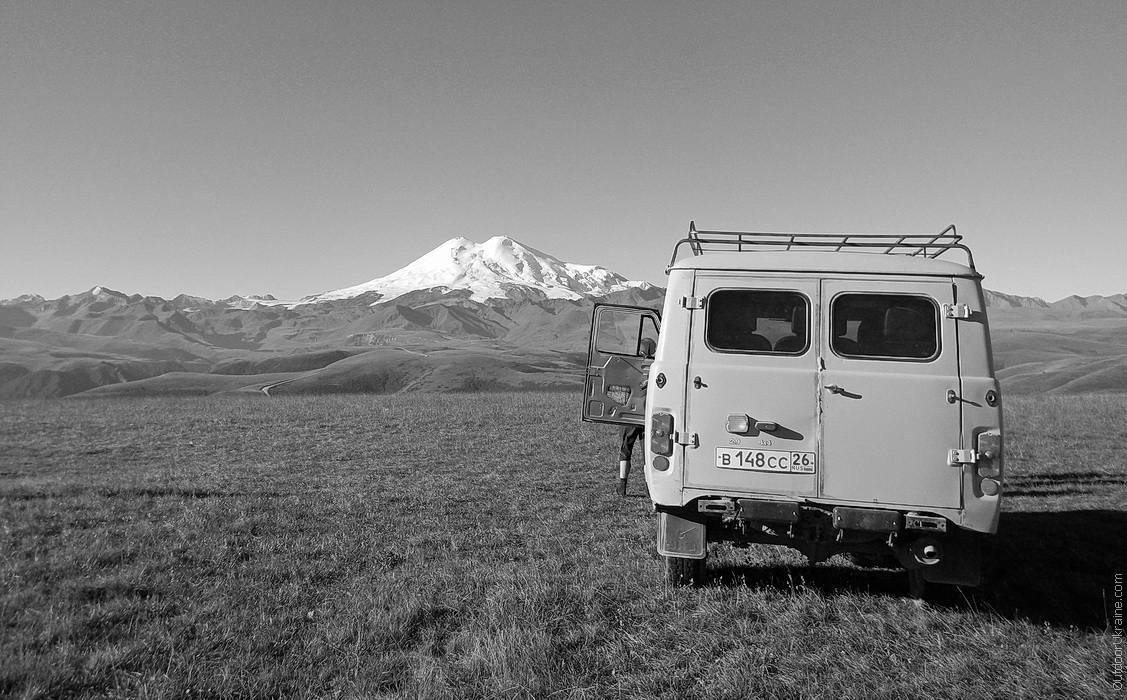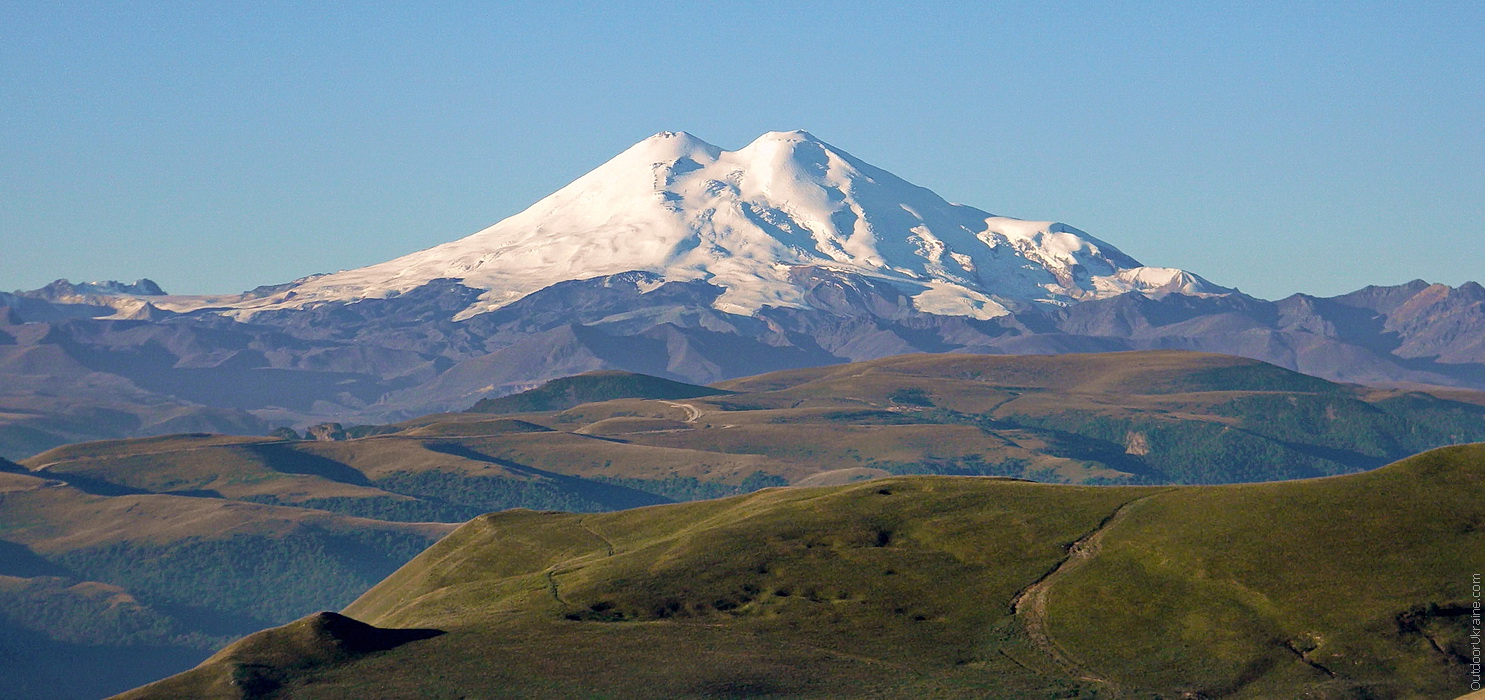Elbrus from the North
- Next tour:
- custom made tour is possible
A difficult trip to the Caucasus, only for experienced tourists with good physical training and strong motivation. When climbing, you need to walk in a bunch, use an ice ax and cats. If you do not already know how, during the acclimatization the instructor will teach you the basic technique, but this does not mean that everything will be easy and simple. The presence of high-altitude experience (long stay at altitudes over 3000m) is welcomed. The ascent to the Eastern peak of Elbrus from the north side will take place along the classical route, there are no tricks or innovations there.
Kislovodsk - Base camp of the Ministry of Emergency Situations - Plateau Aerodrome - Oleynikov's hut - Lenz rocks - eastern peak of Elbrus (5621 m) - Emmanuel glade - Sultan - Kislovodsk waterfall
program ascent
1 day. Kislovodsk, Base Camp (2500).
Group Meeting in Kislovodsk in the station. Should arrive there no later than 11am. Dozakupku produce products, test equipment. No later than 12:00 on the need to leave the route. The trip takes 3-4 hours for custom-made UAZ (about 1500 rubles per person). The height of the camp is 2500 meters near Base Camp MOE and dining room.
Day 2. Radialka to Oleynikova Hut (3740m).
Radialka to Oleynikova Hut - is our assault camp and its height is 3740 meters On the way we pass a plateau 2800 meters Airfield This field was used by the Germans during the war, is based fighters and hence German climbers climbed Elbrus. Closer to shelter our trail will take place on the border of the glacier moraine. Maybe we do zabrosku products and equipment (Depends on the state of the group). In the evening we come back to Base Camp (2500m).
3 Day. North refuge (3740m)
Once again we go to the cabin Oleynikova (North haven). This time with things and tents to set there the assault camp and start preparing for the ascent. 3740 m height overnight
Day 4. Lenz Rocks (4600m)
Remove shoes, change shoes in the "plastics" or other serious shoes. Today we go to Radialka through an ice field to the lower rocks Lenz 4600 m (4 hours operation), and then to the middle of 4800 m is necessary to obtain the necessary acclimatization and learn route further ascent. With the average rock Lenz little rest (pull time again for acclimatization). Go back and spend the night at the North shelter (3740m).
Day 5. Rest (3740m)
Relax in front of the main and difficult shot. But this does not mean that we will fall down in the tents! We need active acclimatization. Snow-ice sessions and walk on the slopes of Mount Elbrus. Early to go to bed.
Day 6. Elbrus (5621 m)
The main cast of the top! The rise in the morning, and exit fees. Usually on the way to the eastern peak of Elbrus (5621 m) goes 8-10 hours. The route to the top of the West even longer and more complicated, so it is unlikely that we will have enough time and energy to her visit. For safety in the 14-00 start descent, wherever we are. On the descent to the North Shelter need about 3 hours.
day 7. Spare.
Reserve day in case of bad weather.
8 Day. Descent, hot springs Gil-Su.
Downhill, through the clearing stone mushrooms Emmanuel. Local tours: silver spring, hot springs, and Gil-Su waterfall Sultan.
9 Day. Kislovodsk.
Departure in Kislovodsk and home! .. At 9 am we takes car, 3 hours away, we are somewhere at 13:00 in Kislovodsk, plus a margin, so tickets can take the train departs no earlier than 15:00.
Itinerary climb Elbrus from the North.
Below is a map of the walking route climb Elbrus from the North. The numbers indicate locations nights. Green dots - interesting
objects on the route. Red Line - the route itself.

Features tour.
You need to understand that participation in high ascent associated with a fatal risk. Any mistake during the actual ascent or during training can lead to injury or death. Here are just some of the risk factors: prolonged exposure to hypoxic conditions (altitude sickness), low temperatures (freezing), difficult terrain (a fall or other HC) ... Each participant climbing, realizing the above risk factors, assessing their level of actual physical , technical and psychological training, takes his own decision to participate in the program and is responsible for their actions (or inaction).
The instructor made every effort and take every precaution to minimize these risks, but is not responsible for any damage that may be caused to the party, in case of sale of any of the risks. "
decision on the ability or inability to continue climbing (for the group or the individual participant) takes only instructor. The Parties undertake to implement the decisions of the instructor bezprikoslovno. If he says, "back", you have to go back, even if you think that you are full of energy and up to the top at hand.
The instructor has the right to make changes in a route based on personal judgment weather, group, and other factors.
Payment: To book a place in the group must make predolatu - $ 100 in the case of refusal to participate, the money was not returned and saved for you to buduyuschih hikes. The remainder of the tour price must be paid no later than one week before the start. In case of early exit from the route, the money is not returned.
Price includes : instructor services, meals on the route, health insurance, group mountaineering gear, check the MOE .
The price does not include : travel to Kislovodsk Kislovodsk to travel from and back to the foot of Elbrus (1500 rubles in the same direction), hire a personal mountaineering equipment (cat, ice ax, harness), the use of paid parking on the route (about 400 rubles a tent).
More
Tour Price: 2,400 hryvnia (about 7200 rubles or $ 300)
Application Form
Application form
Schedule climbing
Elbrus North Start Date - the date the finish> state set
No such tours in schedule
